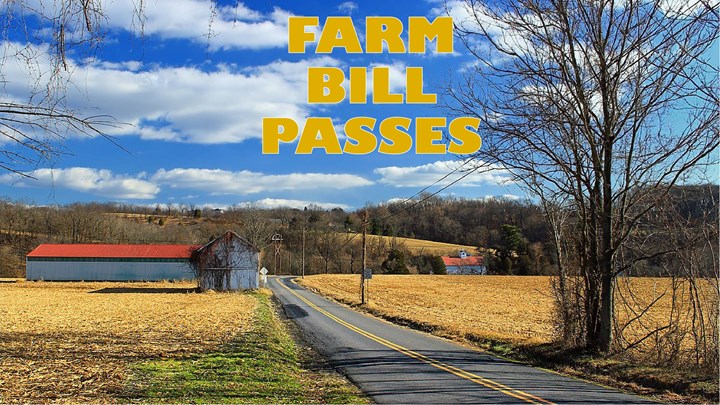
by Frank Miniter - Wednesday, December 19, 2018

Farm bills provide opportunities for large-scale conservation actions that would make U.S. President and NRA Life member Teddy Roosevelt proud. The 2018 Farm Bill just passed by both houses of Congress (by 369-47 in the House and 87-13 in the Senate) and, as this was being written, was awaiting a signature from President Donald J. Trump. Thanks to efforts from NRA-ILA and a long list of hunter-conservationist groups, an active Trump administration and many members of both houses of Congress, this farm bill offers a spreadsheet of smart conservation initiatives.
This five-year farm bill includes funding and programs that will benefit wildlife conservation:
The Farm Bill also reauthorized the Voluntary Public Access and Habitat Incentive Program (VPA-HIP) by allocating $50 million in ongoing support. The NRA was an original sponsor and promoter of Open Fields’ inclusion and funding in the successive Farm Bills, advocating for funding for “walk-in access” programs. Funding has been used by states from Oregon to Arizona to Kentucky to open private lands to hunters. Created via the 2008 Farm Bill, the program was reauthorized with an additional $40 million in the 2014 Farm Bill. Since then, more than 950,000 acres have been made available for public access through VPA-HIP.
In addition, the Farm Bill includes help to address the increasing feral hog populations across the United States. Also, as wildfires have become catastrophic in many areas of the West, the bill includes a provision to enhance active forest management on federal lands to reduce their threat. It extends an authority that expedites the removal of insect-and-disease-killed trees that too often have become fuel for devastating wildfires. Active forest management, which the farm bill encourages, will benefit wildlife and help to prevent the catastrophic wildfires that destroy wildlife habitat.
It is easy to miss how critical these programs are for conservation nationwide. For example, thanks to Farm Bill funding, over the past 25 years the U.S. Department of Agriculture’s Natural Resources Conservation Service (NRCS) “has worked with landowners to protect more than 4.4 million acres of wetlands and agricultural lands, a value of over a billion dollars in a diversified real estate portfolio that has resulted in improved soil health, water and air quality and wildlife habitat. Read more about the easement successes around the nation,” the NRCS says.
Finally, the Conservation Reserve Program (CRP), which is also funded by the Farm Bill, is a land conservation program in which farmers and ranchers are given yearly payments to keep them from farming or grazing environmentally sensitive lands. The goals of this program include re-establishing valuable cover to help improve water quality, preventing soil erosion and benefiting wildlife populations. Anyone who has hunted upland birds, waterfowl or even deer on private lands (or nearby public lands) has benefited from the maintenance and protection of this habitat.
E-mail your comments/questions about this site to:
[email protected]
